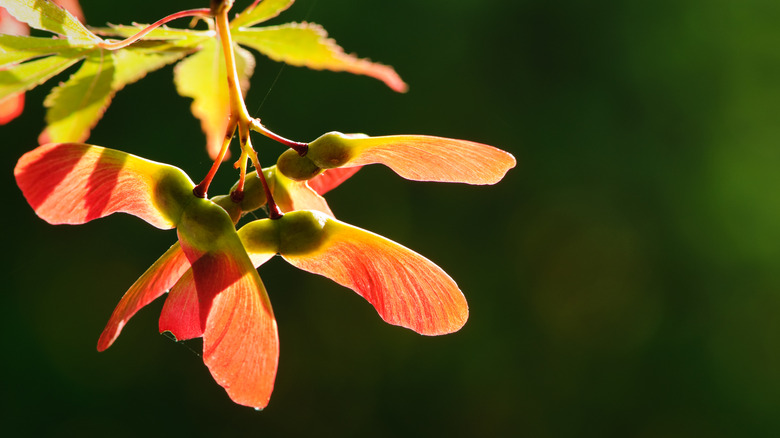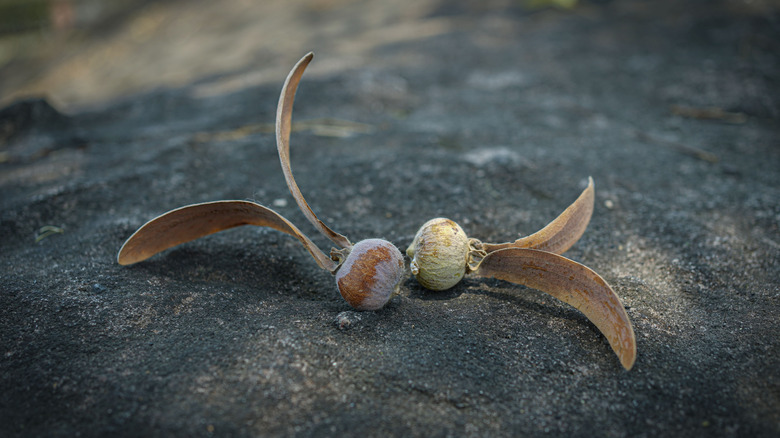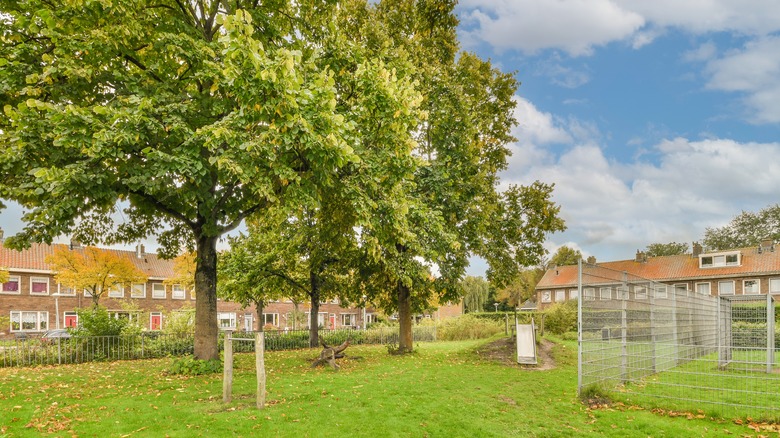What Are Helicopter Seeds And Which Trees Carry Them?
When most seeds fall from trees, they are usually encased in fruits such as apples or lemons, or in a hard shell such as acorns or pecans. Some, like the seeds from cottonwood trees, may float away on soft plumes under a strong breeze. "Helicopter seeds" is a broad term for seeds that fall in a spinning, spiral pattern. They look like they're twirling and dancing in the breeze because each seed has one or more specialized wings that catch the wind. Several types of trees can produce helicopter seeds, including maple trees, ash trees, elm trees, sycamore, and more.
Depending on where you live, helicopter seeds may go by dozens of other local names, such as whirligigs, whirlybirds, wing-nuts, maple copters, spinning jennys, or samara fruits, but no matter what you call them, watching them fall is guaranteed to make you smile. If you've ever sat under a whirligig tree and examined these incredible seeds, you've probably wondered, "Why do they look like that?" Here's the theory behind why some trees developed helicopter seeds, which trees will bring you these fun little seeds, and what you can do to help them thrive in your yard.
Fascinating seeds with wings
Helicopter seeds are produced by a few kinds of deciduous and semi-deciduous trees, including ash, elms, maples, sycamores, and some other varieties. Depending on the individual tree and its environment, helicopter seeds will usually start falling in late spring through early summer. "Samaras" is the broad technical name for seeds with wing-like structures, but "true" helicopter seeds will specifically have two wings, usually straight across from one another. Still, many people refer to all types of samaras as helicopter seeds.
Helicopter seeds have wings like windsails in order to help them spread further away from the mother tree. When a strong breeze blows, developed seeds will be whisked away from the branches and float up to 600 feet away. Trees with helicopter leaves often have large canopies and widespread root systems. Maples, for example, can have roots that stretch out up to five times their height. By floating far away, the seeds have a better chance of finding a roomy and sunny place to grow. Once the seeds find a good place to land, their wings will also help them sit upright in the grass or soil, so their roots can start growing quickly downward.
Growing trees with helicopter seeds
Planting trees with helicopter seeds is sure to bring hours of viewing fun for children of all ages, but which trees should you plant to get plenty of summer whirligigs? Winged elm, American elm, green ash, and velvet ash produce single-winged samaras, while red maple, silver maple, Norway maple, Japanese maple, and field maple produce double-winged helicopter seeds. Ash trees, elms, and maple trees are more commonly seen in yards and gardens, but some other varieties that produce helicopter seeds include the tulip tree, common hoptree, tipu tree, tree of heaven, and sycamore.
To help your tree produce more helicopter seeds in spring, you'll need to ensure that all of its needs are met. Research your particular tree to learn more specific care instructions. In general, maples , ashes, and elms prefer to live in USDA growing zones five through nine, but some can withstand cooler temperatures. Maples prefer deep and moist but well-draining soil and won't succeed well in soil that is too loose, sandy, or alkaline. Ash trees and elms are slightly more adaptable and can grow in loamy, clay, sandy, or rocky soil as long as they have adequate sunlight and not too much moisture. For an extra boost of helicopter seeds, fertilize your trees in early spring, just after new leaves start to emerge.


